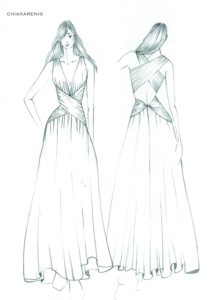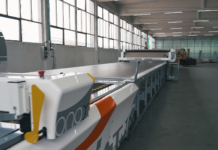 In comparison with a few decades ago and considering the statistics about consumers’ needs, one should write back the song “Tu vuò fa’ l’americano” (“You want to be American”) by Carosone with a new title ‘Tu vuò fa l’italiano’ (‘You want to be Italian’)! In fact, though Italy is facing a long economic crisis, also due to its decreasing GDP, one still considers Italy a country that fears no comparison thanks to its robust roots made of tradition, culture and history. Over time, this array obtained an unbeatable style
In comparison with a few decades ago and considering the statistics about consumers’ needs, one should write back the song “Tu vuò fa’ l’americano” (“You want to be American”) by Carosone with a new title ‘Tu vuò fa l’italiano’ (‘You want to be Italian’)! In fact, though Italy is facing a long economic crisis, also due to its decreasing GDP, one still considers Italy a country that fears no comparison thanks to its robust roots made of tradition, culture and history. Over time, this array obtained an unbeatable style
We should not ignore export, which tells us that Italy is a trendsetter, a country able to launch and establish new trends and new product ranges on the market. Its steady growth shows a greater interest and the increasing demand of Made in Italy labels. Italian taste always ranks as elite, compulsorily joined with Italian flair. Each manufacturing stage certified as made in Italy generates a genuine 100% Italian product. The new, sophisticated yet primary need of niche or high-end segments turns the Made in Italy principle in a genuine reality. Sophisticated luxury is no longer connected with a historical brand that reached the top in consumers’ perception; every brand wishing to stay competitive shall confirm and secure the plus value its target market is looking for as an inviolable principle of its identity and an integral part of a business’ philosophy. Each characteristics of a product shall transfer Made in Italy features. Customers want to be informed and wherever customers find a true and transparent brand communication, they are prepared to build on a confident relationship and become loyal clients. On the international market, Made in Italy is mainly associated with such values as aesthetics, good taste, luxury, wellness, sophisticated and precious products. In particular, customers perceive fashion as a great value; the same is for furniture and cars, which together with food make up a considerable percentage of our export. The rule of thumb is keep our identity, limited only by the fact of building a system! Offering a consistent picture is essential to our country; consequently, districts are important as a pattern for foreign countries and are a good start to build strategic alliances to export both excellent products and a concept. To be successful in selling Made in Italy items one has to establish its philosophy and lifestyle; this way, buying a product becomes a cultural experience. Today talking Made in Italy means profit, business, market and stock exchange, corporate accounts, and above all new strategies. However, we should not forget that the concept was invented by an open-minded Italian gentleman, marquis Giorgini, who in 1951 in Florence understood that the elegant and high-quality products of tailor workshops could turn into a style icon, enduring time and setting in history. The roots and the attachment to one’s country are a basic element of a brand aiming at excellence and wishing to spread its principle. It is the case of Chiara Renis’ trademark; at Chiara Renis’ they consider Australia a breeding ground to tell their story of an aesthetically perfect fashion product. A style beyond short living trends, a luxury based on textile tradition, artisanship and unquestioned quality of materials. A key factor of sophisticated items and of the womenswear collection presented is its exclusive manufacturing process entirely entrusted to Italian firms and suppliers. The focus is on most valuable fabrics, like e.g. cotton from Canclini, silk from Teseo and Clerici, pattern design with Fashion Service, Bari and Union S.r.l. for clothing manufacturing. All of them pay great attention to quality and details. The debut comes with the 2017 Spring/Summer Collection, named Timeless, a hymn to pure aestheticism of shapes and a tribute to noble materials, mainly silk. Linked to tradition, yet future oriented, the Chiara Renis trademark shows a collection playing with contrast, featuring sober and sophisticated components, above all a summary of evergreen taste and contemporary influence.
Analysis and structure of a garment
Let’s analyse a style of the 2017 Spring Summer Collection. A stylish dress, a high-end item for fabric and tailoring. Materials used to make a size 40 garment: 2.40 metres of 105-gram pure silk crêpe for the bottom, 2.60 metre of 55-gram pure silk georgette for the draped top, plus 2.30 metres of cupro lining. The wide long skirt with vertical cuts shows fabric triangles inserted from below the hip line; besides obtaining a larger volume at the bottom, they create a pleasant inlay effect. The waistline is hidden under a drape in turn hiding also a bust section from the waistline to the lower bra line. The bust stiffeners  do not control the shape as they only reach the hip line, however acting as a “scaffolding” to suitably drape the fabric and allow a comfortable wearing. The draped section is made of 2 wide bias cut georgette strips that, from two slant cuts on the back of the skirt, reach the front and turn to the back again crossing over the shoulder to gather at the lower bra line and attach to the bust. An invisible zip on the back of the skirt provides a comfortable wearing.
do not control the shape as they only reach the hip line, however acting as a “scaffolding” to suitably drape the fabric and allow a comfortable wearing. The draped section is made of 2 wide bias cut georgette strips that, from two slant cuts on the back of the skirt, reach the front and turn to the back again crossing over the shoulder to gather at the lower bra line and attach to the bust. An invisible zip on the back of the skirt provides a comfortable wearing.
Manufacturing stages
The firm, plain fabric is not difficult to cut. The skirt inner belt and the bust are first roughly cut, bonded then cut on a template to avoid fabric changes after bonding. Pieces are prepared providing a holding stitch on all bias cut seams to prevent fabrics from giving way while each seam is checked on the size reference table and pattern data sheet. At the assembly stage, we first join the skirt laps with the corresponding inlays placing the bias cut georgette strip in the back slanting seam. We then join the skirt with the outer part of the bust while stitching the stiffeners. The semi-finished garment is now ready to be put on a dummy to shape the draping; the georgette strip is a little longer than planned, since only once the strip is backtacked on the upper section of the bust, the exceeding length will be cut away. A careful handling of the garment and some hidden hand stitches obtain the desired effect. No garment is the same, because of the hand working method, which cannot be standardized while bestowing the garment a special flair. We then join the semi-finished section of the garment with the inner part of the bust, including the skirt belt and the full lining. The edge of every seam shows a narrow, thick overstitch, a typical working method for this kind of garments where no hidden stitches are allowed because of inlays that could generate too thick seams. The bottom of the skirt is finished with a “tortello” stitch. Pressing follows on the skirt only, the draped sections having to look very soft.
by Roberto Larsson and Stella Cafagna




